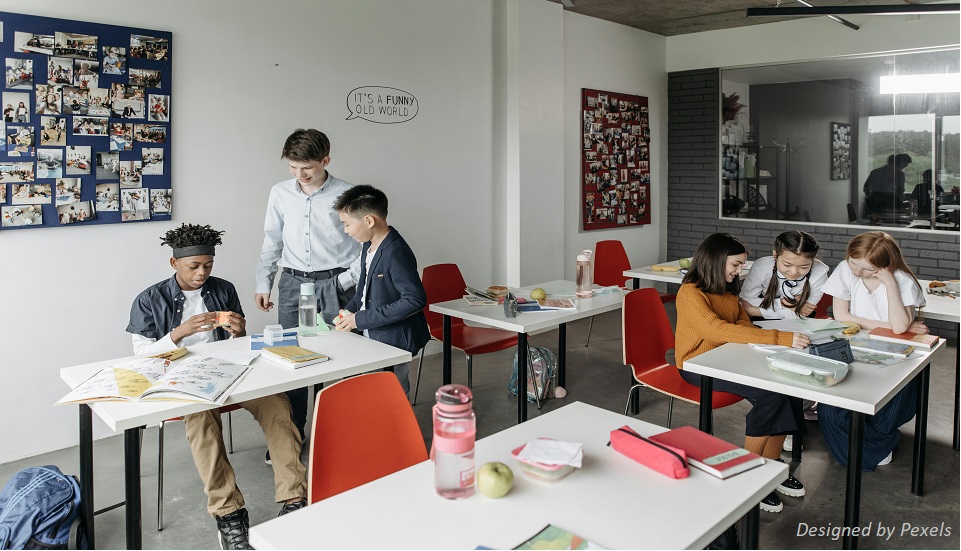5 Discussion Strategies Every Teacher Should Use to Deepen Student Engagement
29th April 2025

In today’s classrooms—whether physical or virtual—student engagement is more crucial than ever. Passive learning simply doesn’t stick; students need opportunities to think, talk, question, and reflect. Meaningful discussions not only spark curiosity but also help students develop communication skills, critical thinking, and confidence. If you are pursuing an Online International Teaching Diploma Program, mastering effective discussion strategies is essential.
Mastering Student Engagement: 5 Discussion Techniques for Educators
If you are struggling to deepen student engagement through classroom conversations, here are 5 effective strategies to do so:
1. Quick Write, Modified Jigsaw, Quick Draw, Turn & Talk
Give students blank note cards and a variety of brief texts (three or four should be plenty) so that each student has a text. Asking students to read the texts and write their thoughts on the lined side of their note cards allows you to either stimulate them or promote open-ended responses. After students have replied, ask them to share their writing in a text pair.
As you move from pair to small group work, you may also form discussion groups where students have studied several books and are asked to compare and contrast themes, characters, conflicts, or other relevant subjects. Once you are done with all the above steps you can encourage students to share what they have learnt from the discussion group on their note card.
2. Think-Pair-Square, Sticky Chat, Gallery Walk, Four Corners
Posting images that are relevant to your lesson in the room's corners and asking students to stand next to the one they like most will help you incorporate kinesthetic participation into class discussions. Assign students in pairs and ask them to independently study the image they have selected.
You can give your kids books to read or just ask them to write down their opinions about the pictures if they don't have easy access to computers. Pairs allocated to the same image can be combined to form discussion groups of four. You can then ask students to record their learning on sticky notes and attach them to the pictures. The class can then go on a gallery walk to share their findings.
3. Classroom Poll, Group Roles, Team Pack Discussion
Form groups of three and give each group a different discussion prompt on a note card to facilitate a conversation sequence that introduces students to several classmates. Assign a particular task to each group member a particular task, such as scribe, speaker, or timekeeper.
Ask your students to respond to given prompt on the note card and then pass it on to the next group. You can then move the speakers one group to the right and the scribes two groups to the right. Ask the students which prompt they prefer after the timekeepers have gone over each one.
4. Debate, Graffiti Wall, Pick A Side
Ask students to write their opinions on a piece of paper and choose a side in a discussion to increase engagement and lessen the stakes. Students can then fold their papers into half length and width wise. Gather the papers, give each form of fold a side of the problem, and then re-distribute them at random.
Encourage arguments between two, four, and eight students, making sure that each side is well represented. To show students' involvement, ask them to write their ideas once again on paper and then stick them to the wall.
5. Spotlight Sticky Notes, Affinity Mapping, Web Discussion
Use an archetype that emphasizes the use of maps to make learning visible: Give pupils a prompt that is related to a brief text or video. Have them put their ideas on colored sticky notes; for example, ‘interesting’ might be written in green, and ‘challenging’ in red.
Divide the class into small groups and instruct them to compare their notes. After a brief discussion, ask the students form a circle and, as they connect with a fellow student's reflection, have them pass a ball of thread to form a ‘web.’
Bottom Line
Incorporating discussion-based strategies isn't just about getting students to talk more—it's about getting them to think more deeply, listen more carefully, and engage more meaningfully with the content and with one another. Remember, the key to successful discussions isn't having all the answers—it’s about creating a safe, structured space where curiosity, critical thinking, and collaboration thrive. If you're enrolled in an Online teaching diploma, mastering discussion strategies will make you a more dynamic, inclusive, and effective educator.
Written By: Sheetal Sharma